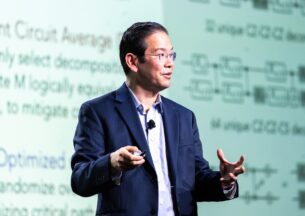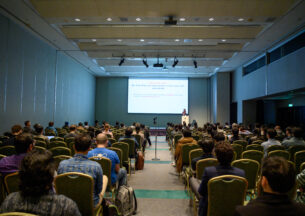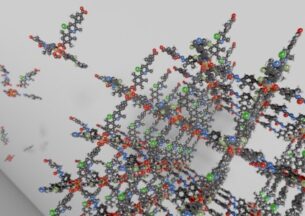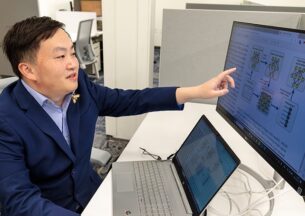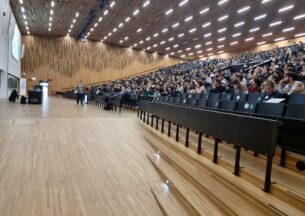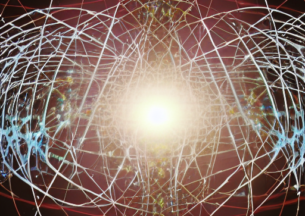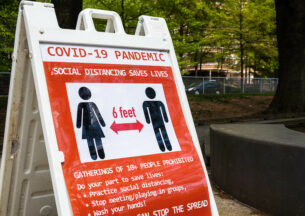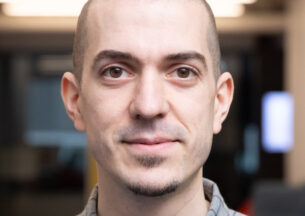UChicago Researchers Excel in IBM Quantum Open Science Challenge
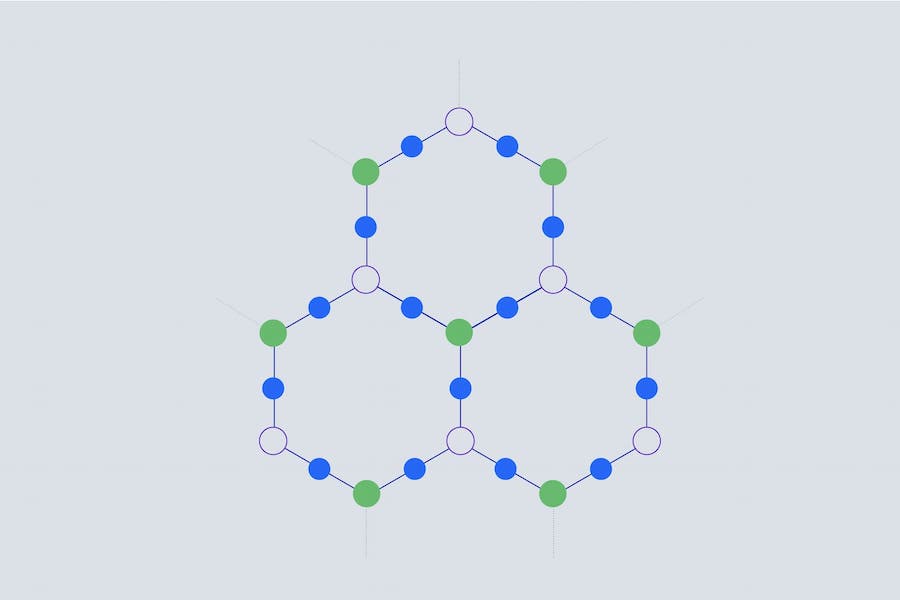
The early days of quantum computing are full of challenges for companies and researchers racing to build the first systems that open up new computational horizons. And in computer science, one of the best ways to resolve these open questions is with a competition. Last year, IBM announced its first Quantum Open Science Challenge, presenting two targets to the research community and offering prize money and experimental time on their quantum computer.
When the results were tallied, two UChicago-affiliated researchers came out on top of their respective categories. Alexey Galda, a Research Assistant Professor in the UChicago James Franck Institute with a joint appointment at Argonne National Laboratory, was one of four winners in the competition’s graph state challenge. And while no researchers met the benchmark for the SWAP gate challenge, UChicago CS alum Pranav Gokhale was acknowledged by the company for his top-ranked solution.
Both challenges shared the ultimate goal of creating near-term quantum computers that perform more quickly and accurately, decreasing the errors and inefficiencies of present-day models. Most quantum machines operate using qubits instead of traditional computer bits, and the great potential of these units to occupy more than two states and share information via entanglement also comes with a multitude of technical challenges in both computer science and physics.
In their solutions, Galda and Gokhale combined their knowledge in these fields and their experience working with UChicago, Argonne, and the Chicago Quantum Exchange to come up with creative and effective approaches. In a press release, IBM saluted the submissions for their “potential to make a tremendous impact on the field.”
“The challenge was a great opportunity for scientists to test their knowledge of the IBM ecosystem and hardware to solve practically-motivated problems,” Galda said. “It was a really rewarding experience.”
From Condensed Matter to Quantum Computers
Galda arrived at Argonne in 2012 as a theoretical physicist interested in non-equilibrium dynamics in condensed matter systems. But as quantum computing gained momentum in industry and academia, he started experimenting with IBM products such as the software development kit Qiskit, using it as an experimental platform to test out his physics hypotheses. When the Open Science Challenge was announced, he saw it as a good opportunity to test his progress and the techniques he had developed.
In the challenge he chose, IBM asked researchers to improve the fidelity of a 7-qubit graph state, a multi-qubit state that can be described as a network of points and vertices. By combining a number of optimization techniques, Galda was able to pass the benchmark of a 50 percent improvement, along with three other research groups. The four winning submissions will split the competition’s $50,000 prize.
Galda’s solution utilized approaches such as dynamica decoupling, which suppresses errors and noise from qubits that aren’t currently in use, and a search algorithm that explores the optimal order of pairwise qubit entanglement operations between the seven qubits. He also tweaked a quantum operation in the IBM Qiskit library to further optimize the implementation of a particular quantum gate.
“By using some of my proprietary tricks and calculations, I was able to make it shorter than the default IBM version,” Galda said. “So it was a combination of four or five different little tricks that each incrementally brought me closer to their target.”
Following the competition, Galda plans to continue using the IBM tools to test and develop his ideas about pulse level control for quantum hardware.
“There’s still a lot of optimization to be done in how quantum computers work, just by playing with software tools and pulses,” Galda said. “It reinforced my understanding that pulse level control is a really powerful technique, and I’m keen to try it more in other challenges and will continue employing it in my own research.”
Short of Target But Long on Potential
In the second IBM challenge, none of the competing teams reached the goal of decreasing SWAP gate errors by 50 percent. But of all the submissions, the strategy that came closest was designed by Pranav Gokhale, a recent PhD graduate from the UChicago Department of Computer Science. Gokhale has stayed active in quantum computing through his startup Super.tech, which was recently admitted to the inaugural class of the Duality Quantum Accelerator based at the Polsky Center for Entrepreneurship and Innovation.
Like the graph state challenge, the SWAP gate problem contains both physics and programming hurdles. In IBM quantum machines and many other quantum computers, the qubits are arranged in a physical layout called a heavy hex lattice, where individual qubits can quickly interact with neighbors in two or three directions. However, when an operation calls for two distant qubits to share data, a more complex rearrangement is required. In his solution, Gokhale found a new way to optimize the instructions that IBM machines currently use to accomplish this task.
“It’s broken up into a sequence of three constructions, and what I noticed was that those three instructions individually might be optimal. But as a collection, they can be optimized as a group much more aggressively,” Gokhale said. “I looked at the device physics of IBM’s quantum hardware, and found a way to implement the SWAP gate that was much faster and much more reliable, because it has fewer instructions going on behind the scenes.”
The change produced an 11 percent improvement in the SWAP gate error rate; short of IBM’s 50 percent benchmark, but better than any other submission to the Open Science Prize. And Gokhale points out that even modest advances to each individual swap gate accumulate into huge gains.
“The SWAP gate is the most dominant gate in typical quantum programs,” Gokhale said. “In a big quantum program, you’re going to have dozens, if not hundreds of swaps. And so there’s this compounding effect, where if each swap is just a little bit better, the program as a whole is going to do two, three, four, or five times better.”
Gokhale will incorporate these approaches into a quantum software stack that Super.tech will release later this year, and will continue to work with IBM tools and hardware as well as resources from other quantum companies. The upcoming software stack will hold many similar optimizations, which Gokhale hopes will help quantum computers better compete with — and eventually surpass — their traditional rivals.
“I think I gained a deeper appreciation for the gap between the hardware physics and the quantum software, this idea that we can make a lot of big gains by doing a better job of closing the gap from the low-level device physics of the hardware to the actual cloud software that runs on it,” Gokhale said. “There are optimizations that can be squeezed out of every single corner, and that’s going to be necessary to make quantum computers outperform classical computers.”


